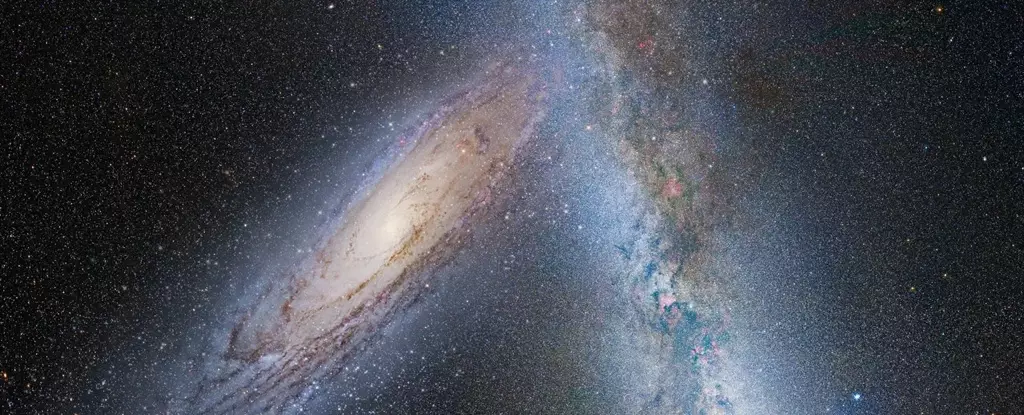The Milky Way and Andromeda galaxies are on a collision course, with astronomers predicting a potential crash in the distant future. The latest study by researchers from the University of Helsinki and Durham University challenges the notion that this cosmic event is inevitable. Utilizing data from the Gaia and Hubble space telescopes, the team simulated the movements of not only the Milky Way and Andromeda but also two other major galaxies in our Local Group – the Large Magellanic Cloud (LMC) and the Triangulum Galaxy.
Previous studies had suggested that a collision between the Milky Way and Andromeda was almost certain. However, the new analysis presents a different perspective, putting the odds of a collision at approximately 50/50 within the next 10 billion years. When different combinations of galaxies were included in the simulations, the probability of a merger varied. While simulations with just the Milky Way and Andromeda showed a collision in nearly half of the scenarios, adding the Triangulum Galaxy increased this likelihood to two-thirds.
Should a collision occur between these massive galaxies, the study indicates that the merger would take place over a median time of more than 7.6 billion years in the future. This timeline is significantly longer than previous estimates, providing more time for the cosmic event to unfold. Interestingly, the research also suggests an equal probability of the Milky Way and Andromeda galaxies avoiding a collision altogether, leading to the survival of both entities in their current states.
While the idea of galaxies colliding might seem catastrophic, the reality is far less dramatic. The timeframe for this event spans billions of years, surpassing the expected lifespan of our Sun. Any potential impact on life on Earth or other celestial bodies would occur long after our existence. The nature of galaxies, with vast expanses of empty space between stars, means that actual star collisions are rare. Instead, gravitational interactions would lead to new orbits and accelerated star formation, ultimately transforming the galaxies into a single elliptical entity dubbed “Milkomeda.”
Despite the detailed simulations and analysis, the future evolution of the Milky Way and Andromeda galaxies remains uncertain. The unpredictability of cosmic events and the complex interactions between galaxies leave room for multiple outcomes. While some studies had confidently predicted a collision, the latest research introduces a level of uncertainty, emphasizing the need for additional data and research to gain a clearer understanding of the galaxies’ fate.
In the vast reaches of space, the collision between the Milky Way and Andromeda galaxies represents a fascinating cosmic event that may or may not come to pass. The study’s findings challenge previous assumptions and highlight the intricacies of galactic dynamics. Whether these galaxies merge into a single entity or continue their paths independently, the uncertainty surrounding their future adds to the mystique of our ever-expanding universe. With further research and advancements in observational data, the true destiny of these celestial giants may become clearer, offering new insights into the evolution of our galaxy and beyond.


Leave a Reply